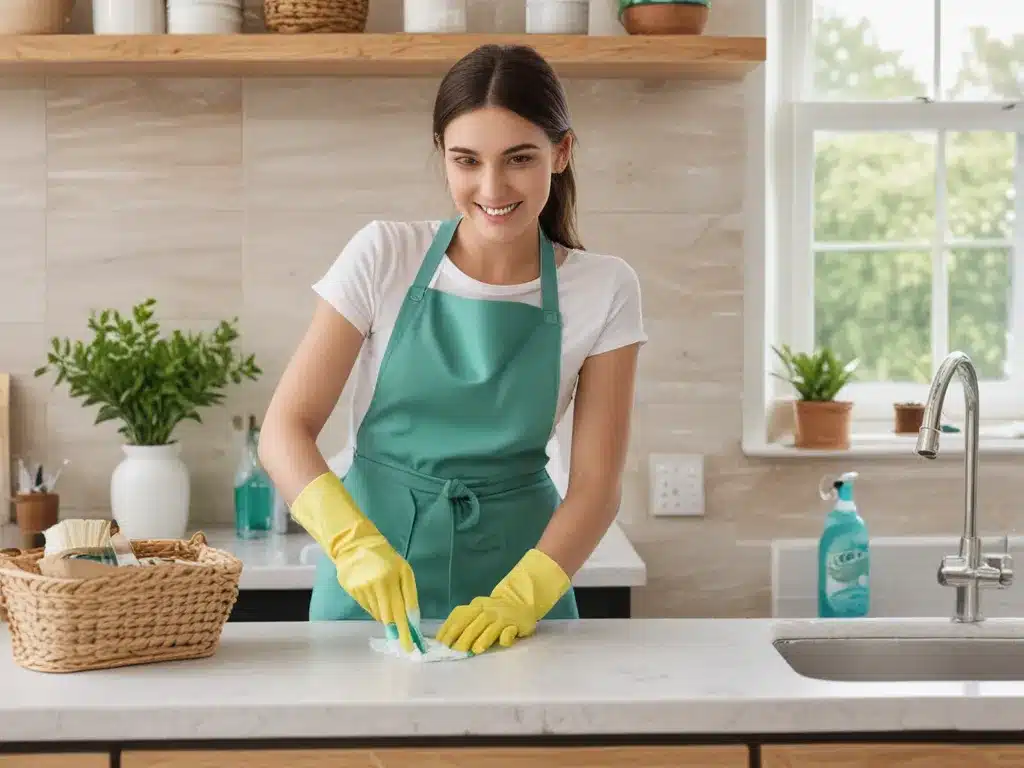Living sustainably often feels daunting. We want to make eco-friendly choices, but worry about the time and money involved in overhauling our lifestyles. However, when it comes to cleaning, small swaps can add up to a big impact without breaking the bank. As a busy person who cares about the environment, I’ve made simple changes that lighten my ecological footprint without much added effort.
Audit Your Cleaning Supplies
The first step is taking stock of what’s already under my sink. Many conventional cleaners contain harmful chemicals like ammonia, bleach, and formaldehyde. These can pollute waterways and the air inside my home. I look for opportunities to swap out products.
Ditch Harsh Chemicals
Toxic ingredients should be avoided when possible. I switch to plant-based cleaning brands that use natural soap nut shells, essential oils, and other safer alternatives. Vinegar, baking soda, hydrogen peroxide, and lemon juice are inexpensive non-toxic cleaners I always keep on hand.
Evaluate Packaging
Much of what goes in the trash is product packaging. I choose cleaners like dish and laundry detergent in simple cardboard boxes or glass bottles over single-use plastics. Buying concentrated formulas in bulk and diluting at home also reduces packaging waste.
Know Your Labels
When shopping, I look for certifications like Safer Choice, EWG Verified, USDA Organic, and Green Seal. These help me identify authentically green products since terms like “natural” are not regulated. I avoid cleaners with warnings like “Caution” or “Danger” on the label.
Use Less Energy and Water
Green cleaning isn’t just about ingredients. I also consider the resources used while cleaning. Small effort here helps lower my energy and water footprint.
Wash Clothes in Cold Water
Using the cool or cold setting on my washing machine reduces energy used in ~90% of the cycle. Clothes get just as clean in cooler water with less wear. I save money on utilities and avoid shrinking delicate items.
Wash Full Loads
I wait until I have a full load before running my washing machine or dishwasher. This maximizes efficiency and avoids wasting water and energy on smaller loads. For laundry, I sometimes let clothes air out between wears instead of washing after one use.
Skip the Dryer
Hanging clothes on a rack or line to air dry cuts electricity use while protecting fabrics. Bonus: no ironing needed for most items! I dry bath towels and sheets in the dryer but air dry everything else.
Install Efficient Fixtures
Replacing old fixtures can really help. Low-flow showerheads, faucet aerators, and high efficiency toilets all reduce water usage. Look for WaterSense labeled models. I also routinely check pipes, hoses, and fixtures for leaks. A little drip can waste hundreds of gallons over time.
Use Reusables Over Disposables
Disposable wipes, paper towels, and similar products generate tons of waste and often contain plastics. I’ve made easy swaps to reusable alternatives.
Ditch Paper Towels
Cloth napkins and dish towels replace most paper towels in my kitchen. They can be washed and reused rather than tossed after each use. I also embraced a little mess and just let some spills dry rather than mopping with disposable wipes.
Make Cleaning Rags
Many tasks around my home don’t need specialty wipes or paper towels. I save money by making DIY rags from old clothes and linens that are stained or worn out. Soft t-shirts and flannel sheets make great dusting cloths. I cut up holey socks and towels for cleaning rags.
Reuse When Possible
Some disposable products are hard to replace. In those cases, I stretch usage as long as I can. Plastic scrub brushes and reusable microfiber cloths mean less waste. I also wipe down counters and mirrors with a reusable spray bottle of cleaner rather than disposable wipes.
The small changes I’ve made to how I clean my home deliver real results for my budget, health, and the environment. Simple swaps to less toxic, energy efficient choices reduce waste without much added effort. What easy, sustainable switches will you try first? Let me know how it goes!







